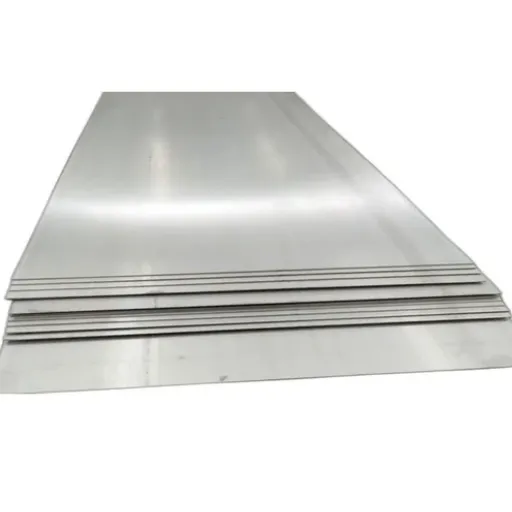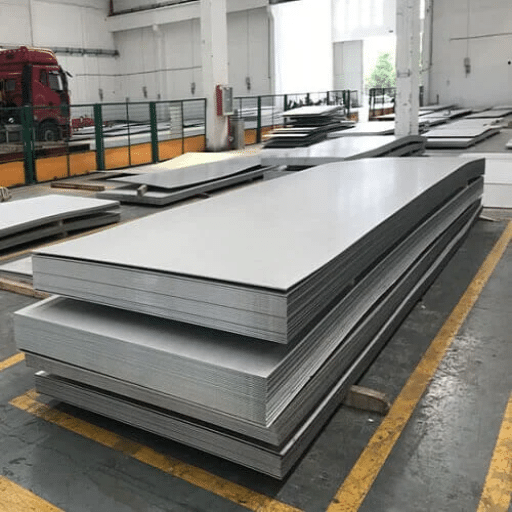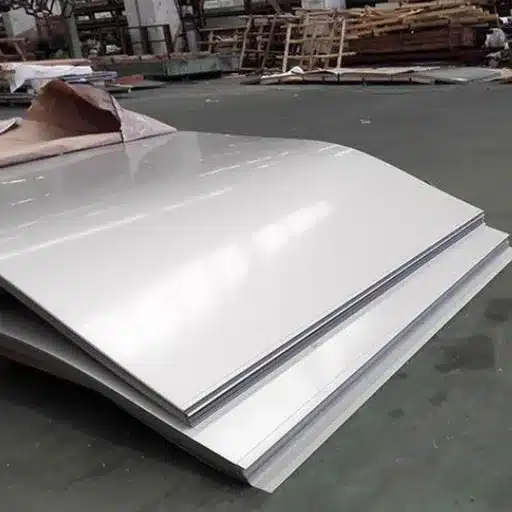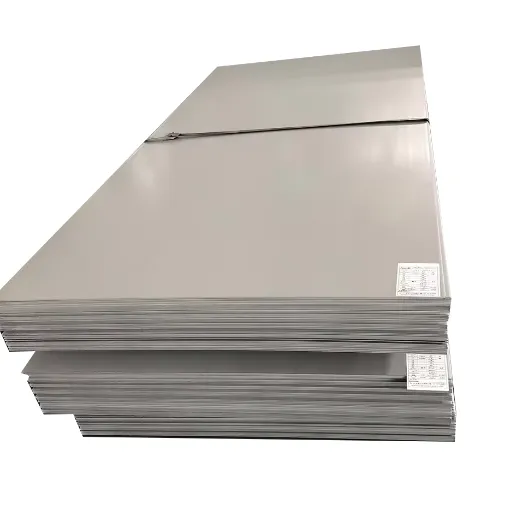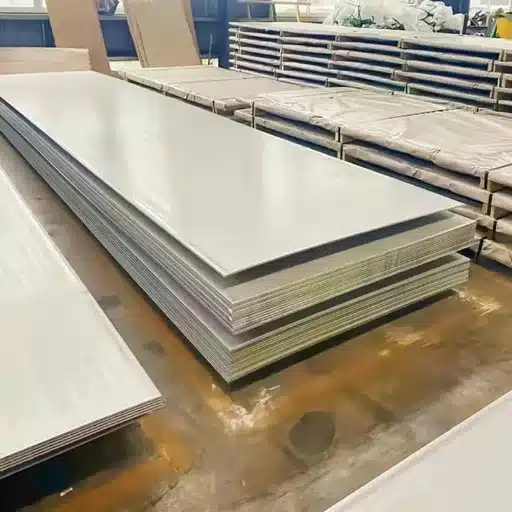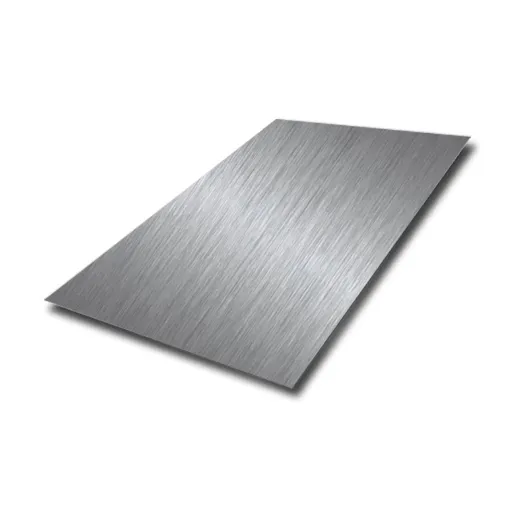Galvanized square steel is a versatile and highly durable material that has gained prominence in a wide range of industries. The construction, architecture, automotive, and manufacturing industries create unique applications for galvanized square steel, making it especially suitable for both structural and aesthetic purposes. This article highlights the significant advantages of galvanized square steel, including excellent corrosion resistance, a long lifespan, and cost-effectiveness. Additionally, we examine the applications of galvanized square steel and why it is generally preferred in harsher conditions compared to other materials. Whether you are a constructor, engineer, or have a general curiosity about modern industrial materials, this guide will impart some keen insights into why galvanized square steel remains an integral part of contemporary construction works.
Introduction to Galvanized Square Steel
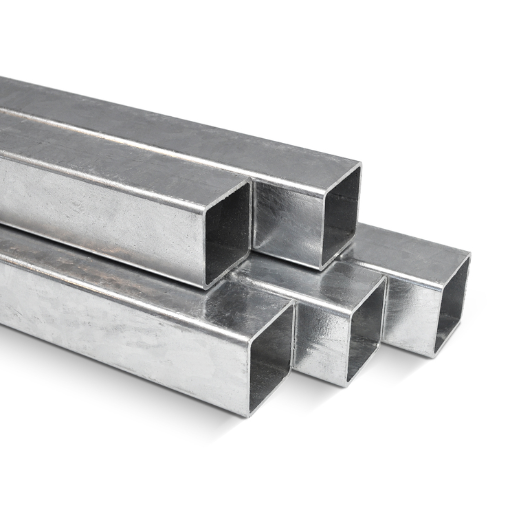
Galvanized square steel is a class of steel that has been protected by a zinc coating to prevent corrosion and thus increase its durability. Such a process comprises hot-dip galvanizing or electro-galvanizing. During hot-dip galvanizing, the steel is dipped into molten zinc in a large pot, whereas electro-galvanizing employs electrical currents to apply the coating. The pact zinc layer is a great shield against moisture ingress and weathering. Owing to their strength, cheapness to application, and long life, galvanized steel squares find wide industrial applications in construction, infrastructure, and engineering. They provide a reliable solution for structural framework, fencing, and outdoor installation by holding up to harsh conditions.
What is Galvanized Square Steel?
This is a durable and versatile product made from steel with a special coating of zinc to protect it against corrosion. The galvanizing process consists basically of immersing the steel pieces in molten zinc, thereby forming a metallurgically bonded layer that protects the base metal from corrosion and deterioration. The zinc coating acts not only as a physical barrier but also provides cathodic protection to the steel, sacrificing itself in areas where the coating may be scratched with a few minor damages to the steel underneath.
The material is often produced to conform to specific standards to maintain high strength, uniform coating, and good and consistent performance. They come in different sizes, wall thicknesses, and lengths, depending on the requirements of the application. These have been commonly used for structural frameworks, greenhouses, handrails, and machinery because of their longevity and resistance to harsh environmental conditions. The combination of affordable pricing, flexibility in fabrication, and high-quality performance makes it a highly important and widely used component in modern-day buildings and industrial settings.
Overview of Galvanization Process
The process of galvanization consists of applying a zinc coating onto steel or iron to prevent corrosion and extend the service life of the material. To achieve optimum performance and uniform coverage, the process is typically performed through a series of highly controlled steps.
In the first step, the base metal is prepared by cleaning and degreasing it, along with pickling to remove any oxides using solutions made up of dilute acids; this brings the surface into pristine condition, facilitating good metallurgical bonding with the zinc. When the surface is clean and ready, it is dipped into a bath of molten zinc at a temperature between 440 °C and 460 °C (820°F-860°F) for several minutes. Here, the zinc reacts with iron in the base metal to form intermetallic layers bonded metallurgically.
Benefits of Using Galvanized Steel
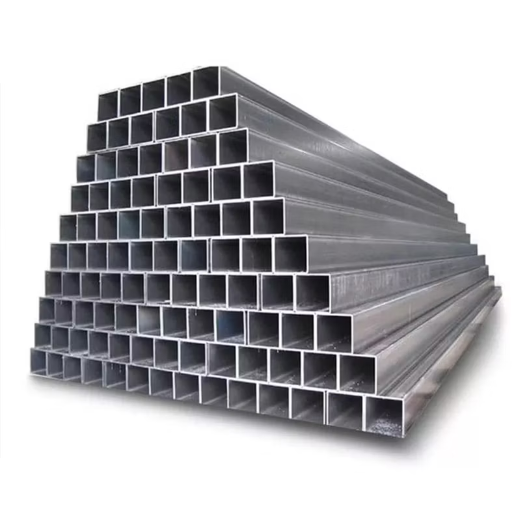
- Corrosion Resistance
Galvanized steel offers excellent corrosion protection and extends the life of materials under harsher environmental conditions. It is reported that galvanized coatings last for more than 50 years in rural environments and up to 25 years in harsh urban or coastal areas, far longer than untreated steel.
- Low Maintenance Costs
Once the galvanization coating of zinc has been applied onto steel, not much maintenance is required, if ever. Painted or untreated steel almost always has to be touched upon for repairs and replacements because of rust; the galvanized steel almost never needs such treatments, thus resulting in huge savings on nugatory expenditures.
- Durability and Strength
The metallurgical bond formed during galvanization develops an abrasive-resistant layer. Hence, this coating needs to have high strength and high abrasion resistance because it is always faced with heavy mechanical wear and environmental stresses during its use in construction, automotive manufacture, and agricultural equipment.
- Cost-Effectiveness in Production
A galvanized finish will often cost more upfront than other options. However, when seen from the bigger picture, considering longevity, reduced maintenance, and less frequent repair, the overall cost over a long time is far less. Studies state that galvanized steel may be up to 50% less expensive than steel that is left untreated for 30 years.
- Quick and Uniform Application
The entire zinc galvanizing procedure can be carried out in just a few hours, which means manufacturers get really short lead times. The process also assures an even coating of zinc over intricate shapes and sharp edges, lending consistent protection that is hard to replicate by other means, like painting.
- Environmentally Friendly
Zinc, which is the prime element during the entire galvanization process, is a natural element abundantly found on the earth. On the other hand, these galvanized steel materials may be reused without any change in their social value, quite enough for these materials to serve sustainability and output reduction in industrial applications. Further advancements in the galvanizing process have lowered the emissions and resources employed during its production.
Cost-Effectiveness in Construction
The use of galvanized steel will yield an excellent return on investment in construction as it takes care of all maintenance and repair expenses that would come with time. The corrosion resistance of galvanized steel is such that it extends the lifespan of structural members, even in the most corrosive environments. For instance, it has been proven that galvanized coatings last for over 50 years in environments considered rural but only for about 20-25 years in urban or coastal settings and this in turn minimizes the costs for both the replacement and repair. Added benefits include being recyclable, thus minimizing the cost of disposal for material waste and in keeping with stringent environmental regulations. This one-time application of galvanization means less labor and management than its counterparts, such as painting, thus further reducing project costs. These give galvanized steel an overall economic edge in large-scale construction and infrastructure projects.
Long-Lasting Performance in Harsh Environments
Galvanized steel is designed to provide dependable performance in harsh environmental settings. It retains integrity against corrosion even in high-humidity, saliferous, or industrial-pollutant regions, with research citing that galvanized-steel structures can stand for 50-plus years even in rural environments and about 20-25 years in highly aggressive coastal and urban settings. The corrosion resistance of galvanized steel is further raised by the zinc coating’s ability to self-heal the damage caused by slight scratches or abrasions when exposed to moisture and oxygen by forming a protective patina at the scratched surface. This ensures there will be much less maintenance and great performance, which makes it valuable for marine, chemical processing, and heavy manufacturing industries where large industrial revenue depends on the longevity of the structures.
Eco-Friendly Attributes of Galvanized Steel
The zinc and steel in galvanization processes are fully recyclable, enabling the material to be reintroduced after the galvanization life into the recycling process without any depreciation in quality or function. As a result, there is a great reduction in waste generation, and natural resources are conserved. In addition, new galvanizing plants are designed for energy efficiency, with the latest technologies employed to conserve energy during production. Another major element that contributes to its environment-friendly outlook is the extended life that galvanization offers; hence, the frequency of replacement is brought down along with the resources required therein. These qualities make galvanized steel an indispensable asset for the industry that is concerned about going green while keeping structural reliability.
Common Applications of Galvanized Square Steel
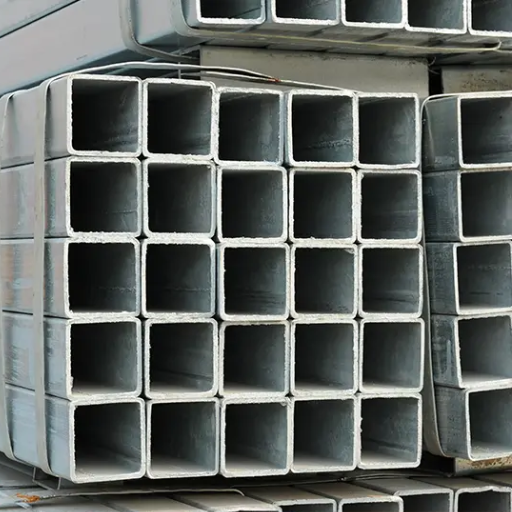
- Construction and Infrastructure
Galvanised square steel beams find varied uses in the construction of frameworks, buildings, and infrastructural work. Lack of corrosion makes it ideal for outdoor works such as bridges, scaffolding, railings, and supports. The material ensures strength for a potential period of working life, together with safety in a more rigorous atmosphere. Small studies show that galvanised steel can extend the life of infrastructure up to 50 years with very minimal maintenance.
- Automotive Industry
Use galvanized square steel in the automotive industry mainly for the frame, chassis components, and protective undercarriages of vehicles. The strength-to-weight ratio, corrosion resistance, and defense traits contribute to increased vehicle life in areas of high humidity or exposure to road salts.
- Agricultural Applications
With galvanized square steel being very resistant, it finds use in equipping agricultural machinery and infrastructure. Amongst the popular uses are fencing, feeding troughs, and irrigation. Its ability to resist moisture and soil contaminants allows it to carry on with the performance for a very long time within the agricultural environment.
- Industrial Manufacturing
Galvanized square steel is normally employed in factories for conveyor systems, storage racks, and heavy machinery frameworks. The fire resistance quality makes it an even more ideal choice in factories and warehouses.
- Energy and Utilities
In the energy sector, galvanized square steel finds its use for transmission tower construction, solar panel mounting, and wind turbine supports. They become really durable under varying weather and hence guarantee good performance with lesser maintenance of vital energy infrastructure.
- Residential and Commercial Applications
Among other applications, galvanized square steel is used for fencing, gates, and furniture frames, bringing plenty of decorative features to the table. Its structural reputation, mixed with aesthetics, makes it quite a practical choice for the construction of both commercial and residential projects.
Use in Construction: Support Beams and Structures
Nowadays, galvanized steel squares have a pivotal role in construction, providing the very strength, durability, and corrosion resistance required for structural integrity. It is most commonly used in the fabrication of support beams, columns, and frameworks of residential, commercial, and industrial buildings. The zinc coating enables steel to better withstand various environmental stressors, such as moisture, extreme temperatures, and chemical exposure, thereby extending its lifespan significantly.
With high tensile strength, galvanized square steel can bear huge loads without deformation or failure, making it a structural advantage architecturally. During ground movements, such as in areas where earthquakes are common, it is used extensively to frame and reinforce because it provides stability. Furthermore, it is used in conformity with standard building codes in the U.S. (such as ASTM A500/A501), which ensures its safe and quality application. As such, this very reliable material is used for bridges, high-rise frames, and large-span industrial buildings; with any less but, cemented in reputation as a cornerstone material in construction.
Manufacturing Applications: Machinery Components
- Frameworks for Heavy Machinery
- The material is applied in the construction of primary structural frames for heavy machinery, including cranes, excavators, and industrial presses. High tensile strength (such as yield strength of 275 MPa for ASTM A500 Grade B) makes it dependable under heavy mechanical loads.
- Shafts and Supporting Columns
- When suitably processed, it finds its way into the rotation shafts or support columns of machines. Dimensional stability and the corrosion-resistant coating agreed upon come as icing on top of the cake in lifecycle performance, especially critical in environments characterized by high humidity or chemical exposures.
- Conveyor System Supports
- Conveyor systems for factories and assembly lines typically employ galvanized square steel as support structures. The material’s resistance to bending under continuous motion and weight further enhances operational efficiency.
- Hydraulic Systems and Piping Frameworks
- The use of galvanized square steel for building hydraulic system housings and pipe frames is favored by its ability to withstand heavy loads while remaining resistant to environmental degradation, especially under outdoor or industrial conditions.
- Protective Casings
- Steel is exposed to fairly, at times, for defensive casings for sensitive mechanical components and protection against hostile external impacts and environments. The durability of galvanized square steel ends the high-frequency repair culture.
- Precision Parts in Textile and Printing Machinery
- Due to the uniform wall thickness and dimensional accuracy of galvanized square steel, usually conforming within a tolerance range of ±0.5 mm, it can be used in the manufacture of highly precise components of textile and printing machines where strict tolerance is required.
The Galvanization Process Explained
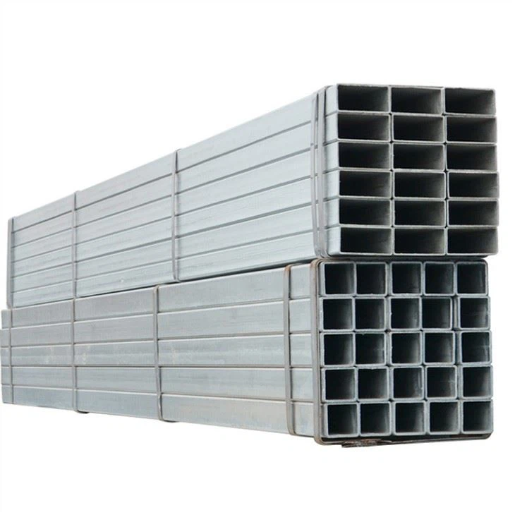
The metal-coating method called galvanization applies a protective zinc coating on steel or iron. Hot-dip galvanizing is widely preferred to create the coatings needed. The metal is washed first to remove any impurities like dirt, oil, or rust through a series of degreasing and pickling operations. With a clean surface, the metal is dipped into a bath at approximately 840°F (449°C) of molten zinc. The zinc reacts with the metal’s surface to form a strong and corrosion-resistant alloy layer. The coating provides a physical barrier while also offering cathodic protection, preventing the steel beneath from oxidizing. Galvanization is very popular and sought after for its efficacy, durability, and low maintenance requirements.
Preparation and Cleaning of Steel
After steel preparation and cleaning, the actual galvanization starts with top coating development. Usually, the process initiates with degreasing or caustic cleaning, eliminating all organic contaminants such as oil, grease, and dust from the steel surface. Subsequently, in the pickling stage, the steel is immersed in an acid solution of hydrochloric or sulfuric acid that erases rust, mill scale, and other oxides from the steel surface. Proper pickling defines a uniform, clean surface, which is essential in the chemical reactions of galvanizing.
Next in the process would be to flux the steel to prevent recontamination until the immersion process. The flux, a mixture of zinc ammonium chloride, is applied in order to eliminate the residual oxides while nurturing a surface that will allow good adhesion of the molten zinc on immersion. Modern methods emphasize strict control of cleaning chemicals, including maintaining appropriate concentrations and temperatures, as these factors most affect the quality and durability of the galvanized coating.
Hot-Dipping vs. Electroplating Methods
|
Parameter |
Hot-Dipping |
Electroplating |
|---|---|---|
|
Coating Thickness |
Typically thicker, high durability |
Thinner, less durable coating |
|
Process Complexity |
Simpler, fewer steps involved |
More complex, requires precise control |
|
Corrosion Resistance |
Superior due to thicker coating |
Moderate, suitable for mild environments |
|
Aesthetic Finish |
Less smooth, industrial look |
Smooth, polished appearance |
|
Bond Strength |
Strong metallurgical bond |
Weaker mechanical bond |
|
Cost |
Generally lower for large volumes |
Higher due to equipment and energy |
|
Application Scale |
Best for large-scale steel structures |
Ideal for small, intricate parts |
|
Environmental Considerations |
Produces more waste, less eco-friendly |
Cleaner, but energy-intensive |
|
Industrial Usage |
Common in construction and heavy industries |
Common in electronics and jewelry sectors |
|
Long-Term Performance |
Excellent in harsh environments |
Suitable for controlled environments |
Enhancements in Steel Longevity
Through advanced treatment and new manufacturing methods, the terrestrial can become more lasting. Implementation of modern alloying methods has greatly increased the resistance of steel against corrosion and mechanical wear with new elements such as chromium, nickel, and molybdenum. Along with these, surface treatments, such as galvanization, anodizing, and powder coating, extend the life of steel by offering a defense layer against the surrounding environment.
Another vital breakthrough is the application of heat treatment, including quenching and tempering, to fine-tune the microstructure for good balance in hardness and ductility. The progress made in nano-coating technologies also helps in durability by depositing super-thin films that prevent the steel from rusting and oxidizing even in harsh conditions.
Moreover, with more predictive maintenance systems becoming available related to non-destructive testing (NDT) and real-time monitoring sensors, industries can actually establish structural integrity and address temporary failures before failure takes place. In conjunction with these state-of-the-art tools, manufacturers and engineers can then confidently deliver steel structures that will meet or even surpass performance expectations in very demanding applications.
Choosing the Right Galvanized Square Steel
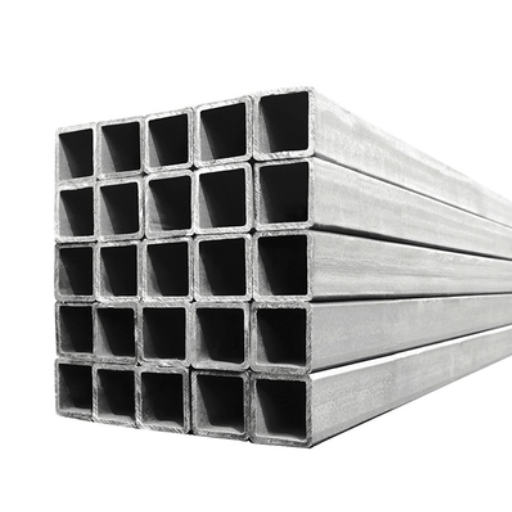
- Environmental Conditions
Evaluate exposure to moisture, chemicals, or extremely inclement weather. In very harsh environments, be sure that the steel is adequately thick in zinc coating to ensure durability.
- Load-Bearing Requirements
Determine the structural demands of the project. Check specifications for tensile strength and thickness to meet your load-bearing needs.
- Standards Compliance
Ensure the steel meets industry standards such as ASTM A500 or EN10305, which guarantee quality, reliability, and consistency in production.
- Surface Finish and Aesthetics
If the project is a visible one, then the uniformity of coating should be taken into consideration, or whether it will require some finishing treatment such as powder coating.
- Supplier Reputation
Make sure these materials are procured from credible suppliers who back their supplies with certification and test reports so that you can be assured of premium galvanized steel.
Environmental Conditions and Their Impact
The environmental variables have a substantial bearing on how galvanized steel performs and how long it lasts. For example, corrosion rates change in accordance with atmospheric environmental conditions. In a rural environment with low pollution levels, corrosion rates are typically between 0.3 and 0.8 microns per annum, with industrial and coastal areas witnessing corrosion rates go up to 25 microns annually because of elevated levels of sulfur dioxide or chloride. Humidity changes, temperature fluctuations, and acidic rains also lead to metal deterioration.
UV exposure is yet another factor of significance that should be considered if there is a high prevalence of such levels in the project area, as protection coatings can potentially degenerate with time. Designing a galvanized steel application involves assessing site-specific criteria that take into consideration moisture cycling, pollutant exposure, and so on. Such evaluation will maintain some structural integrity while reducing the frequency of maintenance required to increase the lifespan of the product even under adverse conditions.。
Budget Constraints and Pricing Options
The initial cost and long-term economic effects of the selection of materials should be weighed in cases where budgetary constraints exist in construction or industrial work. For example, galvanized steel tends to be costlier initially than the non-treated options, but its corrosion resistance can save on maintenance and replacement to a large extent. Most recent data has revealed somewhat stable prices of galvanization, with some fluctuation on the basis of the ability of the region to produce the material and the availability of raw material in that region.
Reference Sources
-
Exploring the Benefits and Uses of Galvanized Square Steel in 2025
This article highlights the durability, corrosion resistance, and versatility of galvanized square steel. It is widely used in construction, automotive, and outdoor applications due to its low maintenance and long lifespan. The zinc coating provides self-healing properties, making it ideal for harsh environments. The material is also eco-friendly and recyclable, contributing to sustainable building practices. -
Global Galvanized Steel Market Status and Future Trends
This report discusses the global galvanized steel market, valued at $174.56 billion in 2024, with a projected annual growth rate of 4% through 2031. The demand is driven by construction, automotive, and home appliances sectors, particularly in Asia-Pacific. Technological innovations, such as zinc-aluminum-magnesium coatings, are improving corrosion resistance and sustainability. -
Advantages and Performance of Hot-Dip Galvanized Square Tubes
This piece focuses on hot-dip galvanized square tubes, which are known for their thick, durable zinc coating. The process involves immersing steel in molten zinc, creating a strong metallurgical bond that resists corrosion for 20–50 years. These tubes are cost-effective, reliable, and suitable for various industries, including construction, agriculture, and transportation.
Frequently Asked Questions (FAQs)
Q: What is the price of galvanized square tubing?
A: The price of galvanized square tubing can vary based on several factors including size, thickness, and the quantity purchased. Typically, larger orders may qualify for bulk discounts, while smaller quantities may be priced higher per unit. Additionally, the market demand for steel and fluctuations in raw material costs can also impact pricing. It’s recommended to compare prices from multiple suppliers to ensure you are getting the best deal. For specific pricing information, consider consulting with steel suppliers or visiting their websites for current stock and pricing information.
Q: How does the welding process affect galvanized square steel?
A: The welding process can significantly impact the properties of galvanized square steel. When welding galvanized steel, the zinc coating can produce fumes that may affect the quality of the weld. It’s crucial to prepare the surface properly by removing the zinc coating in the weld area to ensure strong and durable connections. The heat generated during welding can also alter the resistance to corrosion properties of the steel. Using the right welding technique and equipment is vital to maintain the integrity of the galvanized coating and ensure a functional weld.
Q: What are the properties of galvanized square steel?
A: Galvanized square steel boasts several advantageous properties, primarily due to its zinc coating which provides enhanced resistance to corrosion. This makes it suitable for outdoor applications where exposure to moisture is common. Additionally, galvanized steel is known for its strength and durability, making it a reliable choice for various structural and construction applications. The square tubing design allows for efficient use of space and materials, contributing to its functional versatility. Overall, these properties make galvanized square steel a preferred option in many industries.
Q: Can galvanized square steel be used for creating rectangular tubes?
A: Yes, galvanized square steel can be utilized to create rectangular tubes, as the manufacturing process allows for the shaping of steel into various forms. These rectangular tubes are often used in construction and fabrication, providing structural support or housing for other components. The addition of a galvanized coating ensures that these rectangular tubes maintain their resistance to corrosion over time. It’s essential to choose the right specifications based on the intended use, whether it be for framework or other applications. When selecting materials, consider both the dimensions and the properties that will best suit your project needs.

